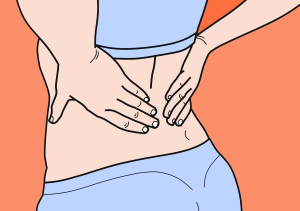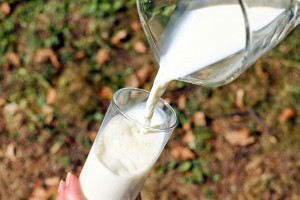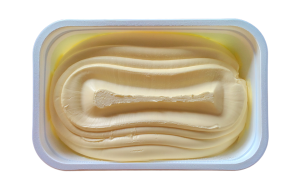By Dr. Mercola
This article was originally published on this website.
The news across the U.S. with respect to contamination involving bagged and chopped romaine lettuce continues to worsen. After a multi state outbreak dating back to March 13, 2018, involving at least 121 known Escherichia coli (E. coli) infections spanning 25 states, including one death, the U.S. Centers for Disease Control and Prevention (CDC) has isolated the problem lettuce to Yuma, Arizona.1
Because it takes an average of two to three weeks for this type of outbreak-related illness to be reported, even more cases are expected to be made known in the coming weeks.
To date, more than 50 people have been hospitalized with a nasty E. coli infection and at least 14 victims have developed hemolytic uremic syndrome, a type of kidney failure, making this quite a serious matter.2 Yuma-grown greens purchased at the grocery store, as well as those served in restaurants, are equally suspect. Sadly, most bagged salad brands do not identify the region where they are grown and processed, making identification difficult.
For that reason, until further notice, consumers are advised to avoid consuming all types of romaine lettuce, including hearts and whole heads, in addition to bagged and chopped romaine, as well as any salad mixes containing romaine grown in the Yuma region.3 Rather than guess if your favorite salad greens are safe, the wisest move is to avoid buying or eating any romaine lettuce or mixes containing romaine until the situation improves.
If you have any doubt, throw it out! Thankfully, there are many other salad greens and vegetables you can eat safely until this situation resolves. I’d also like to suggest a few tips that will help you enjoy salad greens and other produce safely going forward.
Why Are There so Many Health and Safety Issues With Salad Greens?
It’s no secret U.S. consumers love the convenience of prewashed produce that is sold in bags, clamshells and tubs. Unfortunately, those types of greens are precisely the ones continually implicated in outbreaks associated with foodborne illness. In fact, says The Washington Post, food-safety experts suggest “convenience greens — those handy bags of prechopped and prewashed salads — carry an extra risk because they come in contact with more people and machinery before they arrive on your plate.”4
- coli is quite common — its many strains are found in food and the environment and also live in animal and human intestines. Thankfully, most E. coli infections are tolerable, if not harmless. The types of E. coli known to cause illness are often transmitted through contaminated food and water or through contact with animals or people. For example, in a large 2006 outbreak of E. coli involving spinach, wild pigs and well water were suspected causes.5
Do You Know Where Your Salad Greens Are Grown?
Due to the industrialization of our food system, Americans eat produce from all over the world, regardless of whether it is in season locally. It’s not unusual to go to the supermarket and return with fruits and vegetables grown and harvested in Canada and Mexico, as well as countries in Europe and South America, among others. Although enjoying seasonal produce raised far from home has become the norm, this convenience is not without a cost.
According to The New York Times,8 the majority of bagged romaine lettuce provided to grocery stores and restaurants across North America is grown in California’s Salinas Valley. There is, however, one exception: In late fall and winter, the industry makes a seasonal move to Yuma.
Given the timing of the current E. coli outbreak, authorities believe the infected romaine was very likely grown in Yuma. While more details will be forthcoming, it seems likely the outbreak was caused either by an animal defecating in a field or some form of contaminated water runoff.
It’s worth noting that concentrated animal feeding operations (CAFOs) are a major source of water contamination throughout the U.S. Even the Arizona Department of Environmental Quality (ADEQ) states, “Nationwide and in Arizona, the potential for surface and ground water pollution exists through livestock facility discharge of manure-contaminated run off to natural waterways and through wastewater leaching to aquifers.”9
While the source of the outbreak has not yet been pinned down, it’s certainly possible that industrialized agriculture has played a role. On a brighter note, because most of the industry’s bagged romaine production shifted back to California in April, says The New York Times, the Yuma-grown produce should be out of the food supply shortly.10
“Hopefully with it being in one particular growing region and that region moving to California, it won’t be too much longer [before you can begin eating romaine again],” said Laura Gieraltowski, Ph.D., who leads the foodborne outbreak response team within the CDC’s outbreak response and prevention branch. “It’s a fast-moving outbreak,” she said. “We’re getting reports of new illnesses daily from our state and local health departments.”11
Ways to Safeguard Your Health When Eating Greens
While you may think washing your lettuce would eliminate the bacteria, the truth is it takes but a few cells of E. coli to make you sick. Despite the fact that rinsing your produce with water — even the brands that claim to be triple washed — may lower your risk of illness, it doesn’t eliminate your risk entirely. Washing is no guarantee you will get rid of potential toxins. Beyond that, some experts suggest using commercial fruit and vegetable washes are not much more effective than water alone.25
Although some recommend a light bleach solution, I cannot recommend bleach for household cleaning applications and even less so for food preparation. The best way to ensure the cleanliness of your food and food-preparation area is to apply common sense. Below are a few tips that will guide you in handling produce and other foods safely.
Always:
- Wash your hands with soap and water before handling food, and most especially after handling raw meat.
- Use a scrub brush to remove dirt and debris from root vegetables or any fruit or vegetable with a rough skin.
- Rinse all produce, even bagged varieties, well under running water.
- Remember loose produce is touched and handled by many other people before it is purchased by you; wash it well before eating.
- Use separate cutting boards and utensils for raw meat.
- When chopping more than one type of food, wash your counter, cutting board and utensils frequently to avoid cross contamination.
- Do not prepare food for others when you are sick.
Because most of the people affected by the current E. coli outbreak became ill after eating at restaurants that used bagged, pre-chopped lettuce in their salads,26 you can dramatically reduce your risk of infection simply by avoiding salads when dining out and by eating more meals at home. Beyond that, since raw greens pose the most risk, you may decide to cook more of your greens to reduce your risk of contamination.
Two safe options for consuming greens are steaming or using a pressure cooker — you may want to add some healthy fat to promote maximum absorption. In my opinion, your very best
option is to grow your own food. Whether that be in a vegetable garden, in containers or in trays, you won’t regret the time and energy you invest in cultivating healthy, homegrown food.
The good news is greens such as lettuce are among the easiest garden vegetables to grow, and they are prolific. By planting new seeds every 10 days, you can receive multiple harvests throughout the growing season. Depending on where you live, you may be able to grow certain greens year-round. If gardening is just not your thing, consider purchasing your greens from a local farmers market instead of the grocery store.














